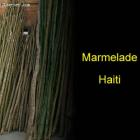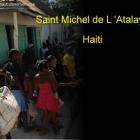ADVERTISEMENT
Poverty Tips - Haiti Observer Blog
Poverty Tips, Haiti Observer Blog. Read the following articles about Poverty Tips
How Haiti Plans to eliminate extreme poverty by 2030
Since 2000, Haiti has gone through many disasters, both political and natural. However, despite this, Haiti has achieved some progress in controlling poverty.
Recent studies indicate that there is improvement in accessibility to basic services, and there is a decline in extreme poverty levels, that is, from 31% to 24%.
Achievements
• Improvements have been achieved in areas such as education, where the number of children enrolled in schools has risen from 78% to 90%.
• Progress has also been achieved in accessing sanitation, tap water, and electricity.
Challenges
Haiti, one of 8 countries in the world half of its children not attending school
Of 8 nations in world where half of the children don't attend school, Haiti is one of the countries. It is because of this reason that Laurent Lamothe - Prime Minister of Haiti and Vanneur Pierre - Minister of Education for Haiti attended a meeting with UNESCO in Washington D.C. along with the ministers of the 7 other nations. The other nations include South Sudan, Yemen, Nigeria, India, Ethiopia, the Democratic Republic of Congo and Bangladesh.
UNESCO called this meeting to discuss the challenges faced by these countries and the steps that can be taken to open doors for education for the children. International Monetary Fund and World Bank hosted a ministerial meeting on April 18 with a theme called 'Learning for All'. Michaëlle Jean, UNESCO Special Envoy for Haiti also attended the meeting. It was informed to the press by Michaëlle Jean that she participated in the round table that dedicated specifically for Haiti alongside Vanneur Pierre, Laurent Lamothe, Irina Bokova (Director General of UNESCO) and Gordon Brown (US Special Envoy for Global Education).
Haiti And Dominican Republic, Geographical And Historical Differences
While Haiti suffers, Dominican Republic is well off and occupies Caribbean Island of Hispaniola up to around 30,000 sq m. It is filled with resorts, is prosperous and healthy while Haiti continues to be poverty stricken. The Dominican Republic is ranked 90th on the human development index out of the 182 countries while Haiti comes 149th.
In Haiti the life expectancy is 61 years while in the Dominican Republic it is 74 years. In case a person lives on 2/3rds of eastern Hispaniola then he is more likely to write and read and live on less than 1.25 dollars a day.
Eighty Percent of children in orphanages in Haiti are not orphans
Haiti has a serious problem with child-care facilities, costing the government of Haiti (GOH) a tremendous sum of money. A study, conducted by UNICEF and Institute of Social Welfare and Research (IBESR), determined orphanages house 80% of children, who have parents or other living relatives.
With 70% of the Haitian population living in dire poverty, many of these families cannot afford to feed their children and abandon them. And it often takes place immediately after birth in maternity wards.
The GOH, due to budget concerns, has been forced to shutter 25 child-care facilities in the country. The 12,000 children from these facilities have been transferred to orphanages that meet green standards. IBESR inventoried 750-plus government-operated child-care facilities, assigning a rating system of "green, yellow, or red" to insure child safety.
Modern day slavery exists in many forms
Whether the victim is tricked into owing a debt, forced into servitude, or sent to work as an unpaid domestic, all are forms of slave labor.
Sources in the international community say that enslavement is a threat to anybody by virtue of random circumstances not under their control. In some instances, victims are lured by promises of a better life. Preying upon the destitute and naïve from underdeveloped countries, seeking a way out of their misery, these predators ensnare and coerce their victims into debt bondage.
An illustration of this method of slavery is the plight of illegal crossing over the border from Mexico into the U.S. Lured by rumors of work, they are picked up during the border cross and told there are jobs waiting for them. They ride for days, caged within the vehicle, with no chance to eat or relieve themselves.
Child Labor in Haiti or Restavek
The term used for children with this arrangement is restavek (one who stays).
Haiti suffers the reputation as the poorest country in the Western Hemisphere. Many Haitian families cannot afford the care of their own children, so they send them to live with rich families as unpaid domestics or Restaveks.
Sometimes a restavek will live with a family, who can afford to educate them and give them adequate living conditions. If not, will use the floor as their bed and be subjected to sexual abuse.
Restaveks are domestic slaves, and the majority of them are girls, 80% of them. They perform household chores, not for pay, but in return for shelter, food, clothing, and education, usually of inferior quality. Even under optimal conditions, restaveks have inferior status in the household, even with peers and younger.
Our objective is to share with you news and information about Haiti and the people of Haiti. Traditions, habits and the way we were or grew are alive in this site. We highly recommend that you Subscribe to our Newsletter and also share with us some of the things that are memorable and made us unique people.

 Marmelade, Haiti
Marmelade, Haiti  La Chapelle, Haiti
La Chapelle, Haiti  Saint Michel de L 'Atalaye
Saint Michel de L 'Atalaye  Haitians are a Proud People
Haitians are a Proud People  Maissade, Haiti
Maissade, Haiti